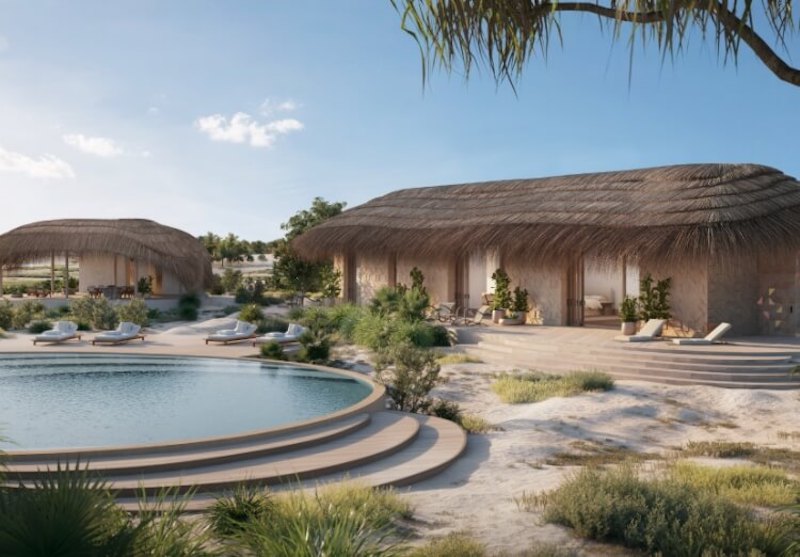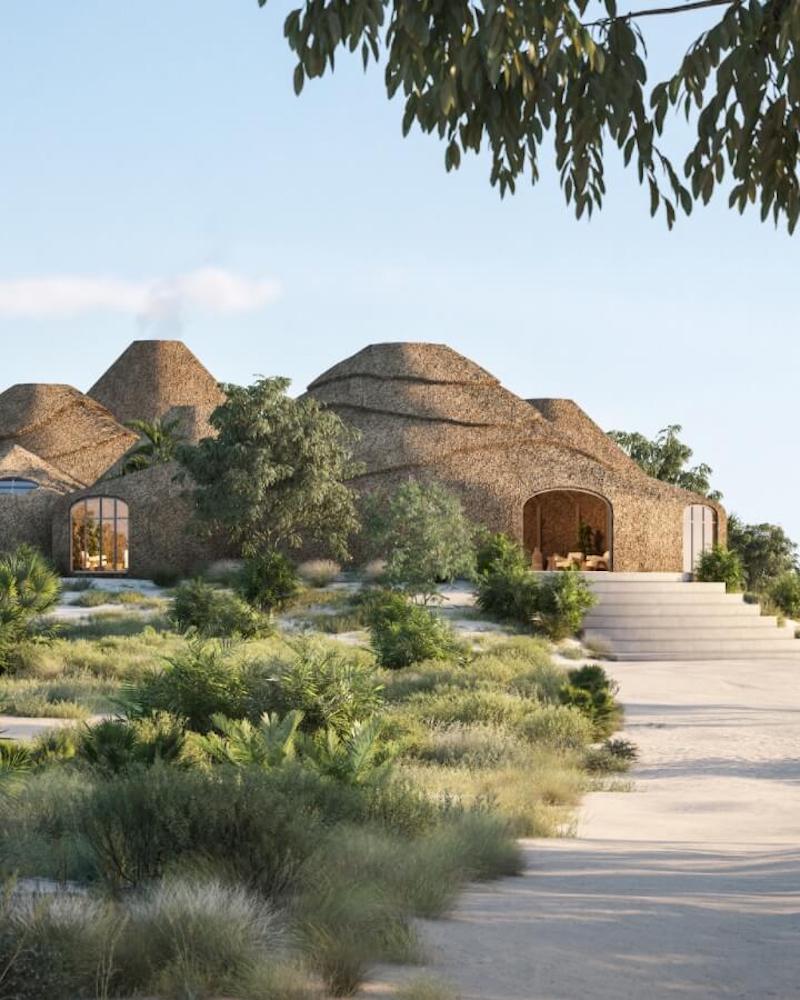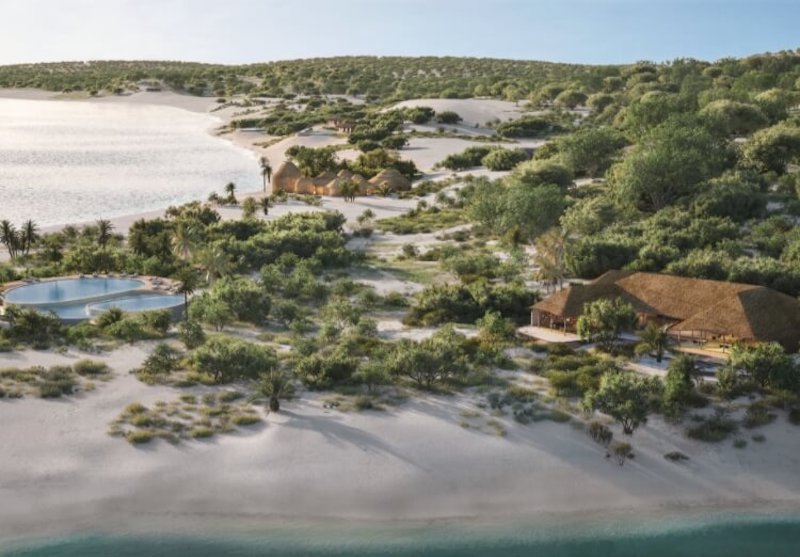Located on Benguerra Island in Mozambique, Kisawa Sanctuary will feature 12 one-, two-, and three-bedroom bungalows set across the island’s beach, forest, and sand dunes.
In order to protect the island’s delicate ecosystem, the resort’s design is meant to blend rather than interrupt. Chief among these design elements is the fact that the resort will be 3D printed from local sand and seawater using patented technology designed specifically for this project. Kisawa Resort will work in partnership with the Bazaruto Center for Scientific Studies, its non-profit sister project, to maintain balance and harmony throughout all of the resorts interactions with the environment.

Each 2,475-sf bungalow is set within one acre of private accommodation and includes a personal beachfront, swimming pool, open deck space, shaded day area, outdoor kitchen, massage hut, and personal e-bikes and mini mokes. The bungalows will be decorated and furnished with pieces from local artisans from Mozambique.
See Also: Culdesac Tempe will be the country’s first from-scratch, car-free neighborhood
Four restaurants, two bars, and myriad on-location culinary experiences will cater to guests 24/7 hospitality needs. A stand alone spa, inspired by nearby Mozambican dwellings, will specialize in Traditional Chinese Medicine and Ayurvedic offerings. It will offer a range of treatments to guests including massages and multi-day detox retreats. A gym, yoga and meditation pavilion, tennis court, and water sports facility are also located on the property.
Kisawa Resort is on track to open next year.


Related Stories
| Nov 26, 2013
Construction costs rise for 22nd straight month in November
Construction costs in North America rose for the 22nd consecutive month in November as labor costs continued to increase, amid growing industry concern over the tight availability of skilled workers.
| Nov 25, 2013
Building Teams need to help owners avoid 'operational stray'
"Operational stray" occurs when a building’s MEP systems don’t work the way they should. Even the most well-designed and constructed building can stray from perfection—and that can cost the owner a ton in unnecessary utility costs. But help is on the way.
| Nov 19, 2013
Top 10 green building products for 2014
Assa Abloy's power-over-ethernet access-control locks and Schüco's retrofit façade system are among the products to make BuildingGreen Inc.'s annual Top-10 Green Building Products list.
| Nov 15, 2013
Metal makes its mark on interior spaces
Beyond its long-standing role as a preferred material for a building’s structure and roof, metal is making its mark on interior spaces as well.
| Nov 13, 2013
Installed capacity of geothermal heat pumps to grow by 150% by 2020, says study
The worldwide installed capacity of GHP systems will reach 127.4 gigawatts-thermal over the next seven years, growth of nearly 150%, according to a recent report from Navigant Research.
| Nov 6, 2013
Green hotel trends: Industry expands its sustainability focus beyond laundry
There’s more to creating a sustainable hotel than saving water and power by asking guests to reuse their towels.
| Oct 30, 2013
15 stellar historic preservation, adaptive reuse, and renovation projects
The winners of the 2013 Reconstruction Awards showcase the best work of distinguished Building Teams, encompassing historic preservation, adaptive reuse, and renovations and additions.
| Oct 30, 2013
11 hot BIM/VDC topics for 2013
If you like to geek out on building information modeling and virtual design and construction, you should enjoy this overview of the top BIM/VDC topics.
| Oct 28, 2013
Urban growth doesn’t have to destroy nature—it can work with it
Our collective desire to live in cities has never been stronger. According to the World Health Organization, 60% of the world’s population will live in a city by 2030. As urban populations swell, what people demand from their cities is evolving.
| Oct 18, 2013
Researchers discover tension-fusing properties of metal
When a group of MIT researchers recently discovered that stress can cause metal alloy to fuse rather than break apart, they assumed it must be a mistake. It wasn't. The surprising finding could lead to self-healing materials that repair early damage before it has a chance to spread.

















